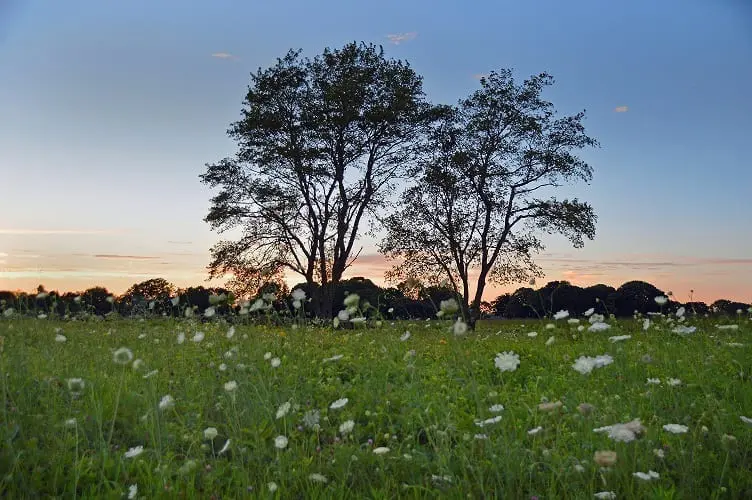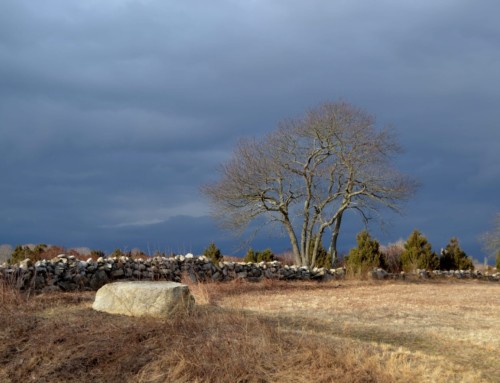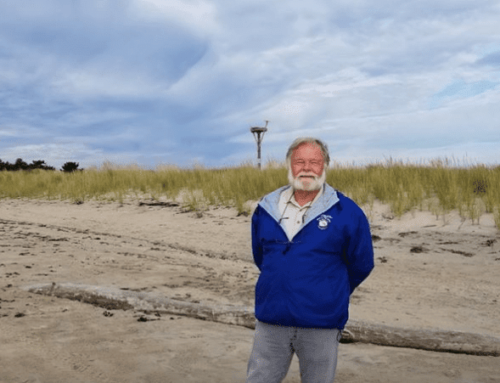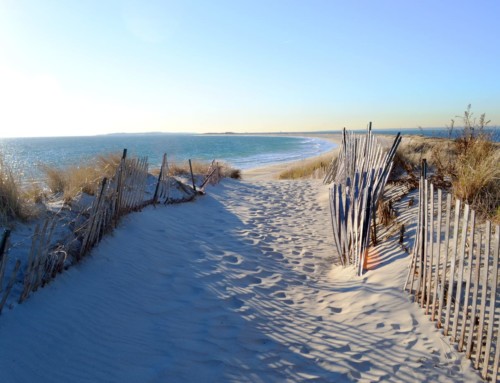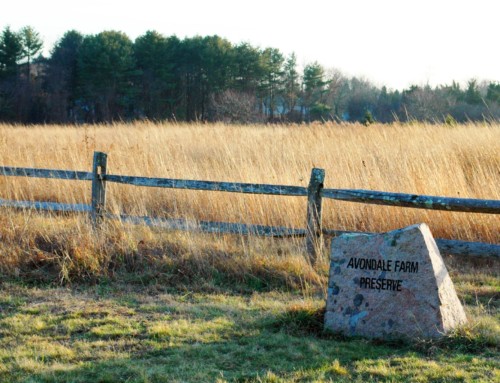They are one of the most successful life forms on our planet and they have been around for millions of years. They have evolved into perhaps as many as 400,000 different species and are known by scientists as angiosperms. What are they? If you guessed flowers, you’d be right.

This scene at the Avondale Preserve looks like it could have been taken 50 years ago when the fields at the preserve were part of the Chapman Farm. The center field is being plowed to help eliminate invasive species and it will be reseeded with pollinator-friendly grasses.
There is a place right in Westerly where nature puts on its own flower show; it’s the Avondale Farm Preserve. The preserve is an important grassland habitat that the Westerly Land Trust planted with native plant species in the early 2000’s. These native warm season grasses and wildflowers are beneficial to pollinators like bees and butterflies, and to grassland bird species that may breed in the preserve or rest here during annual migration.
The season for summer wildflowers will be here soon and the flowers will be blooming from spring through autumn. I recently met with Kelly Presley, Executive Director of the Westerly Land Trust at the preserve to find out what makes this place so unique. Kelly explained the preserve’s importance and the challenges of managing a grassland habitat.
There are two big challenges to managing a grassland habitat. The first is that grasslands are temporary habitats. In the natural world, areas that have no or low vegetation because of fire, wildlife grazing, or other natural causes are quickly colonized by pioneer species such as grasses and wildflowers. Then, through natural succession over time, woody plants and shrubs move in and you have habitat dominated by shrubs. Then trees come in and eventually you have forest.
The grassland is gone. So when you’re managing a habitat to keep it at a certain successional period you come up against challenges. The easiest way to maintain grass is to just keep mowing it; farms that produce hay do that.
The constant mowing keeps the grassland by preventing woodier plants from getting established. Better management practices for grassland habitats like Avondale Farm Preserve are to not mow every area every year because you want to leave some grasses and other plants standing during the winter to provide cover and food sources for birds.
The second big problem is the invasive species. In the early 2000’s, the preserve fields were plowed and seeded with the native plants and since then we’ve been managing it. Originally the preserve was divided into three sections and the mowing was on a three year rotation. So in any one year you only mowed one section, about a third of the preserve, but we found out that mowing an area every three years isn’t frequent enough to keep invasive plant species away.
The invasive species include Autumn Olive, Glossy Buckthorn, Japanese Knotweed and Porcelain Berry, among others. As a result, we have consulted with other grassland managers and wildlife conservation groups to develop a new strategy. Last year we began mowing more frequently to try and get the invasive plants under control. We are leaving one area closer to the marsh permanently untouched for wildlife habitat and leave some other sections of the preserve uncut over the winter to provide cover and food as well.
I also asked Kelly why this grassland habitat is so important to the birds.
Most areas in New England that were open grassland like this have been developed because the land is flat and dry, perfect for construction projects. This has made grassland become a fairly uncommon habitat. One of the goals in managing the preserve is to keep it open grassland habitat for migratory and grassland birds. Grassland birds are very specific in their habitat requirements.
The population of grassland birds regionally and in Rhode Island has been and continues to be in decline including the Eastern Meadowlark, Bobolink, and several sparrow species. It’s critical to keep grassland habitat available for these ground nesters.
These birds actually nest in the grasses on the ground, using the grass for nest structure and to hide from predators. When you walk the paths may see birds running on the ground which may be young that haven’t fledged yet or parents trying to draw your attention away from the nest location. It’s important that visitors keep their dogs out of the grasses for the nesting season which generally runs from late April through August first.
Kelly explained that the Land Trust’s long-range plans include planting pollinator strips around the periphery of the center section to benefit butterflies, bees, and other pollinators. The center grassland area itself may be planted with pollinator-friendly grasses in the future as well. The Land Trust is also looking for volunteers for an ongoing effort to rid the preserve of the invasive species.
If you’re into native plants and wildflowers, the preserve really puts on a show this time of year. Early morning walks can produce sightings of deer and many different species of birds. Being a photographer, I think the best time to view the wildflowers is in the late afternoon as the lighting is perfect for photography or painting.
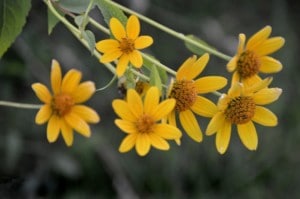
Just a few of the beautiful sights to see as the preserve
When you visit the preserve, your children will like seeing the Icelandic horses and miniature donkeys at the Watch Shade Farm. Just past the farm’s stone wall, take a right onto the perimeter path. This path winds around the preserve and is where you’ll find the best wildflowers.
On the opposite side of the preserve, there is a grass parking area at the end of Quail Run with a picnic table. It’s a great place to watch the sunset with some cheese and wine. (Remember, all Westerly Land Trust preserves are carry in/carry out, so take any trash with you when you leave.)
So grab your camera and paint brushes or bikes and skateboards and head to the Avondale Farm Preserve. You won’t be disappointed. The Westerly Land Trust’s 7th annual Farm Dinner will be held here on September 9th. The dinner is a great way to support the Land Trust’s conservation efforts.
If you would like more information on the Avondale Farm Preserve, reserving seats for the Farm Dinner, or the many other Land Trust activities, you can visit the Westerly Land Trust’s website.
